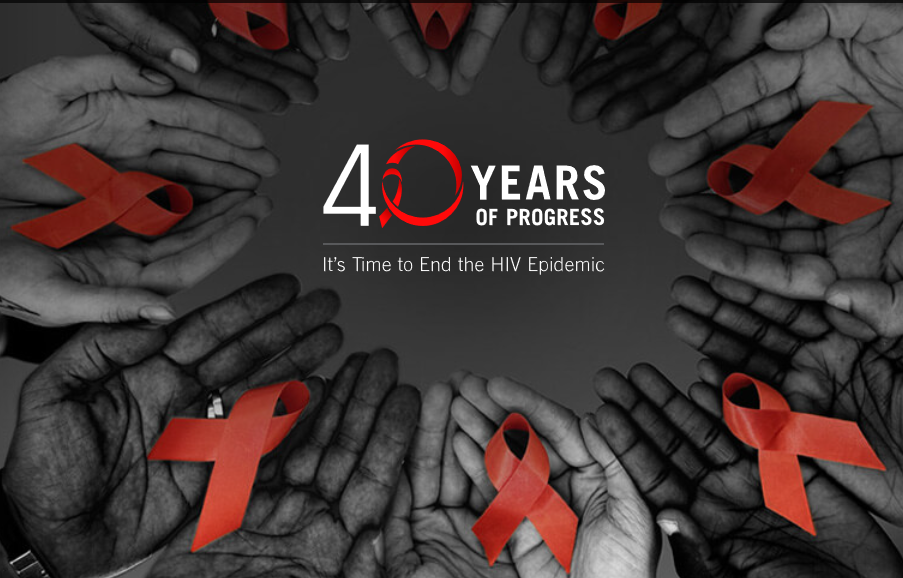On June 5, 2021, CHIPTS commemorates the 40th anniversary of the first reported cases of AIDS and honors HIV Long-Term Survivors Awareness Day. We remember the more than 32 million people who have died from HIV worldwide since the start of the HIV epidemic, and reenergize our commitment to the 38 million people currently living with HIV, including long-term survivors like Jeff Taylor. Read Jeff’s reflection on his experiences as a long-term survivor and advocate below.
This content originally appeared on HIV.gov. View the full article here.
By: Jeff Taylor, Executive Director, HIV+Aging Research Project-Palm Springs
It’s been nearly 35 years since I was diagnosed with HIV. I was infected in 1981 or 1982 before we knew anything about HIV, or how to protect ourselves. When I tested HIV positive in 1988, I was told I had less than two years to live and to “go home and start making arrangements to die.” I was 26 at the time and wasn’t expected to live to be 30, let alone 60.
Today, I advocate for improving the quality of life for older Americans with HIV, who like me have been living with HIV for decades into an old age we never expected to reach. As we grow older with HIV, many of us face new challenges, including both physical and mental health struggles. Now, more than ever, we need help.
For many long-term survivors, HIV is the least of our challenges. Because the virus itself is mostly controlled, many of us are instead faced with managing the related health effects of decades of living with HIV and its treatments, such as an increased risk of an early cancer diagnosis.
For long-term survivors who also struggle with loneliness, depression, and social isolation , these struggles have been made worse by the ongoing COVID-19 pandemic and the stigma of ageism. Forced to manage the personal impact and cost of living with HIV, some long-term survivors have been forced to relocate, and struggle to recreate a sense of community and belonging. Without a strong support system, some turn to drugs and alcohol to self-medicate.
Despite these challenges, there is hope for those with HIV, and many ways that health care providers, community organizations, and individuals can offer support.
Health care providers need to adapt a geriatric model to address the complex needs of older Americans with HIV by extending office visits to allow for managing multiple chronic conditions and health challenges. Providers can also adapt cancer prevention strategies by providing earlier cancer screenings, especially for anal, oral, and head and neck cancers that disproportionately affect older Americans with HIV.
Community organizations need funding to create and fund peer-support programs that empower those with HIV to connect with one another for support, share their challenges, and provide the collective benefits that volunteering has for all those involved. By making long-term survivors part of the solution, they can play a role in outreach and community support of each other—hearkening back to the Denver Principles (PDF, 19KB) of “nothing about us without us.” Community organizations can also collaborate with social workers, to better address their needs and create a support system that offers the types of services that can make the biggest impact on the daily lives of older Americans with HIV. Ideally, HIV service providers need to co-locate clinical and social support services under one roof so that older people with HIV can have seamless care coordination, and don’t fall through the cracks.
National, state, and local governments need to expand their support services to meet the growing needs of older Americans with HIV. As they leave the workforce, or as their work disability expires at age 65, they may need assistance with housing, supplemental income, mental health support, and other essential services. With many current HIV programs focused on prevention and treatment, many older Americans with HIV feel overlooked, which is demoralizing and further compounds their feelings of loneliness and depression. Government agencies should ensure that outreach messages, materials, and campaigns include older Americans with HIV and recognize the role they play in our work if we are to achieve our goal of ending the HIV epidemic.
I and my HHS colleagues want everyone with HIV to know that they are supported, and we want policies, programs, and outreach from health care providers, community organizations, and government agencies that reinforce that message. Those with HIV coping with loneliness or with substance abuse need access to non-judgmental, culturally appropriate, treatment-on-demand using harm reduction models. Even with all the successes in HIV over the years, there are more than one million people with HIV in the United States today, the majority of whom are over 50, and we need help if we are to thrive as we live into an old age we never anticipated.
With the 40th anniversary of the first CDC Morbidity and Mortality Weekly Report (MMWR) article identifying what would come to be known as HIV and AIDS, we can celebrate our successes, but we also need to take stock of the challenges and work that remain. Thanks to decades of work by the HIV research community and trial participants – lessons learned from HIV clinical trials helped the medical community quickly develop a safe and effective COVID-19 vaccination. However, many long-term HIV survivors still need our support.
Let us all work together to ensure that long-term HIV survivors feel a sense of belonging, community, and support. Let us be an ally in the journey that lies ahead for those aging with HIV.

